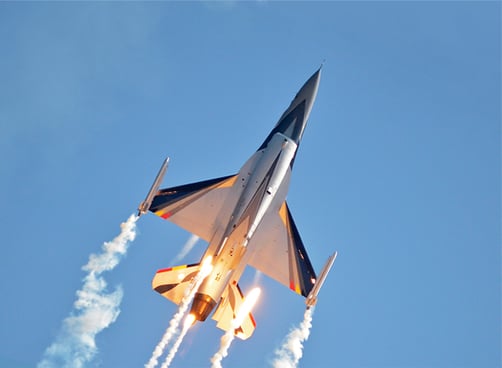
As there are so many cable variations, it can be overwhelming to figure out the best option for your applications. The simplest way to determine the cable that is right for you is considering the three prominent features of aircraft cable: characteristics, construction, and material. By understanding these three considerations, you are sure to get the best cable for your aircraft applications. Read further to find out more!
Cable Characteristics:
When looking for aircraft cable, each cable type has different characteristics that impact the performance of your application in different ways. For example, certain types of aircraft cables are non-rotating. Non-rotating cable remains still and does not twist or rotate during lifting applications. Non-rotating cable is ideal for tasks such as helicopter rescue hoists when you want your cable to stay as still as possible. Alternatively, choosing a cable that can rotate is a great choice when looking for a bit more flexibility. Cables that rotate are ideal for a wide range of applications such as aircraft controls and rigging.
Cable Construction:
You may notice that cables are labeled numerically, such as 7x7, 7x19, etc. These numbers are called constructions and refer to the number of strands by the number of wires in each cable. For example, 7x7 means there are seven strands with seven wires in each strand for a total of 49 wires. In other words, 7x7 cables are made of 7 strands, each with a cluster of 7 wires. Why is this important? Each construction has different capabilities. Typically, the more wires wrapped around a strand, the more flexible the cable. For example, a strand product with fewer wires, such as a 1x7 strand, is stiff, whereas a cable with a lot more wires like a 7x19 aircraft cable has a high level of flexibility. Knowing the variations of cable constructions will ensure you pick the aircraft cables that have the right level of resistance, flexibility, and tensile strength you require.
Material:
Commonly, aircraft cable is made from galvanized or stainless steel. Both are great for aircraft applications, so let’s go through some of the critical features of each material. Galvanized steel is steel dipped in a zinc-coating. This process gives galvanized steel a good corrosion resistance level and is often slightly less expensive than stainless steel. Unless salt is present, galvanized steel will tolerate various corrosive elements making it an excellent option for aircraft applications. Alternatively, stainless steel has a higher level of corrosion resistance and at times is stronger than galvanized steel. Stainless steel is the material to choose if your cable will constantly be exposed to harsh environments.

While many cable types can be used in the aircraft cable, considering characteristics, construction, and the material will help you choose the ideal cable for your applications. At Strand Core, we make various cables that fit a wide of industries and applications. We recommend three aircraft cables: our 7x7 Cable, 7x19 Cable and 19x7 Non-Rotating Cable. To check out the various sizes and capabilities of our products, please visit our website here. Alternatively, if you have any questions, our team is happy to help! Reach out to us by email through sales@strandcore.com or by phone at 800-983-9926.

